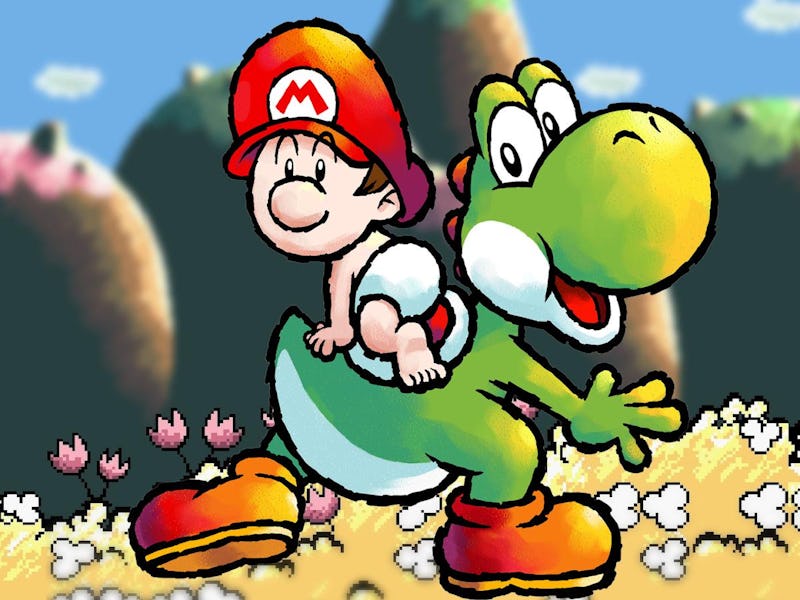28 Years Later, Yoshi’s Island Is Still the Most Underrated Mario Game Ever
Adventures in babysitting.

By 1995, the world of side-scrolling was coming to an end. The NES and SNES had steered Nintendo into a place of global domination, but the next generation of consoles were already tempting away players. The Sega Saturn and Sony Playstation were cutting-edge, offering players fully 3D games. Even if 2D games generally looked better than blocky polygons, the future was here.
Nintendo was in the unusual place of being behind the curve. Its N64 console was still a year away, which meant 1995 would be the 16-bit era’s last hurrah. The end of a console’s life cycle can produce games that can feel like a testament to a whole era. Think God of Wår 3 ending the PS3’s time on a high note. Back in 1995, Super Mario World 2: Yoshi’s Island was the high note.
The game carried such a long shelf life that seven years later, after several revolutions in technology, the game was brought back for the Game Boy Advance under the name Yoshi's Island: Super Mario Advance 3. It’s available right now if you’ve subscribed to Nintendo Switch Online + Expansion Pack.
Wow, battery backup!
To get the full 2002 experience, pull the Switch out of its dock. Yoshi’s Island works perfectly on the handheld, offering a deep and detailed platforming experience wrapped in child-like aesthetics. Like the Mario games before it, Yoshi’s Island has a distinctly hand-made, artisan feel to it. It also changed what was possible for the series.
The game is a prequel of sorts, taking place when Mario was just a baby. Yoshi, it turns out, is from Yoshi Island, home of the Yoshis. One day, a stork was flying in the sky and bringing two baby brothers to their parents. However, the bird is interrupted by the wicked Kamek, who wants to prevent them from reaching their destination. The two land on Yoshi Island, and it’s up to a clan of multi-colored Yoshis to get them back to where they belong.
So with Baby Mario riding along, the Yoshis hop from level to level. One rule that producer Shigeru Miyamoto laid down was that Yoshi could not dîe. (He’s a cute dinosaur, look at him.) So instead of the touch-demise that had become Mario standard, a new mechanism was introduced. When hit by an enemy, Baby Mario flies away in a bubble. A timer starts, and if the player can’t get Yoshi to retrieve him within that time frame, Koopas swoop in and take the crying infant away.
All the colors of the rainbow.
Yoshi has some new weapons as well. While players of Super Mario World were accustomed to Yoshi eating things, here the dinosaur can essentially digest his opponents and turn them into eggs. These eggs become bullets, more or less, that Yoshi can fire at enemies. He can also spit them out and have them roll at each other, but why spit when you can shoot?
Shooting at, say, piranha plants and having them wither away was a new experience for Mario players. Like the protagonist of an early Resident Evil game, Yoshi cannot move when shooting. And he can’t control the aimer, which must be timed just right. So it’s not a be-all, end-all weapon. But it is very cool to nail a piranha plant.
They say it takes a village to raise a child.
Yoshi goes through several variations in the game, like a helicopter and a drill. He pushes giant stones that call to mind Indiana Jones and stomps on the ground. A malleable dino, he jumps between platforms and dodges incoming Chomps that put holes in the ground. Every new ability feels as vibrant as the game’s colors. And the Advance version of the game has a few new levels too. They’re not hugely transformative, but they’re fun.
A game that is able to take concepts as distant from each other as parenthood and gunplay and meld them together in a cartoon style that’s like soft felt, Yoshi’s Island is a testament to the creativity of the era in which it was created.
This article was originally published on